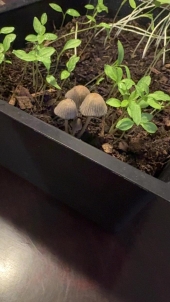













Treating Gout using Cherry - The cherry, sweet or sour, is considered in effective treating gout. To start with, the patient should consume about fifteen to twenty five cherries a day. Thereafter, about ten cherries a day will keep the ailment under control. While fresh cherries are best, canned cherries can also be used occasionally.
Gout Treatment using Vegetable Juices
Raw vegetable juices are used for gout treatment. Carrot juice, in combination with the juices of beet and cucumber, is especially valuable. Beet juice - 100 ml and cucumber juice - 100 ml should be mixed with 300 ml of carrot juice to make 500 ml of combined juice and taken daily
Treating Gout using French Beans
The juice of French or string beans has also proved effective in treating gout. About 150 ml of this juice should be taken daily by the patient suffering from this disease.
Cure for Gout using Apple
Apples are regarded as an excellent source for curing gout. The malic acid contained in them is believed to neutralise the uric acid and afford relief to gout sufferers. The patient is advised to take one apple after each meal.
Gout Relief using Banana
Bananas have been found beneficial in the treatment of gout. A diet of bananas only for three or four days is advised for providing some relief from gout. A patient can take eight or nine bananas daily during this period and nothing else.
Treating Gout using Lime
Lime is also used as a source in treating gout. Vitamin C is known to prevent and cure sore joints by strengthening the connective tissues of the body. The citric acid found in lime is a solvent of the uric acid which is the primary cause of this disease. The juice of half a lime, squeezed into a glass of water, should be taken twice daily.
http://www.home-remedies-for-you.com/remedy/Gout.html
 1
1




How permies.com works
What is a Mother Tree ?












When the body metabolizes purines - an aromatic organic compound whose derivatives are naturally occurring in foods as DNA/RNA constituents - inefficient enzyme action can result in the build up of their end metabolite, uric acid. It then crystallizes in joints, causing gout. Foods highest in purines are meats, and particularly organ meats.




































 )
)"Forgive me if I never visit. I am from the fields, you know, and while quite at home with dandelion, make a sorry figure for the drawing room" ~Emily Dickinson













Lisa Allen MH (AstroHerbalist)
TimingMagic.com




Lisa Allen MH (AstroHerbalist)
TimingMagic.com








Lisa Allen wrote:For those interested, if you live in the Northern USA, nearly everywhere is a plant called Field Bindweed. In the Himilayan system of Ayurveda, it is the SAME plant as what they term "Ashwagandha" - use the roots and tincture - see Todd Caldecott's website for more info.






Lisa Allen MH (AstroHerbalist)
TimingMagic.com
 2
2




 2
2




Invasive plants are Earth's way of insisting we notice her medicines. Stephen Herrod Buhner
Everyone learns what works by learning what doesn't work. Stephen Herrod Buhner
 2
2




Invasive plants are Earth's way of insisting we notice her medicines. Stephen Herrod Buhner
Everyone learns what works by learning what doesn't work. Stephen Herrod Buhner
 10
10





|
You would be much easier to understand if you took that bucket off of your head. And that goes for the tiny ad too!
Learn Permaculture through a little hard work
https://wheaton-labs.com/bootcamp
|


